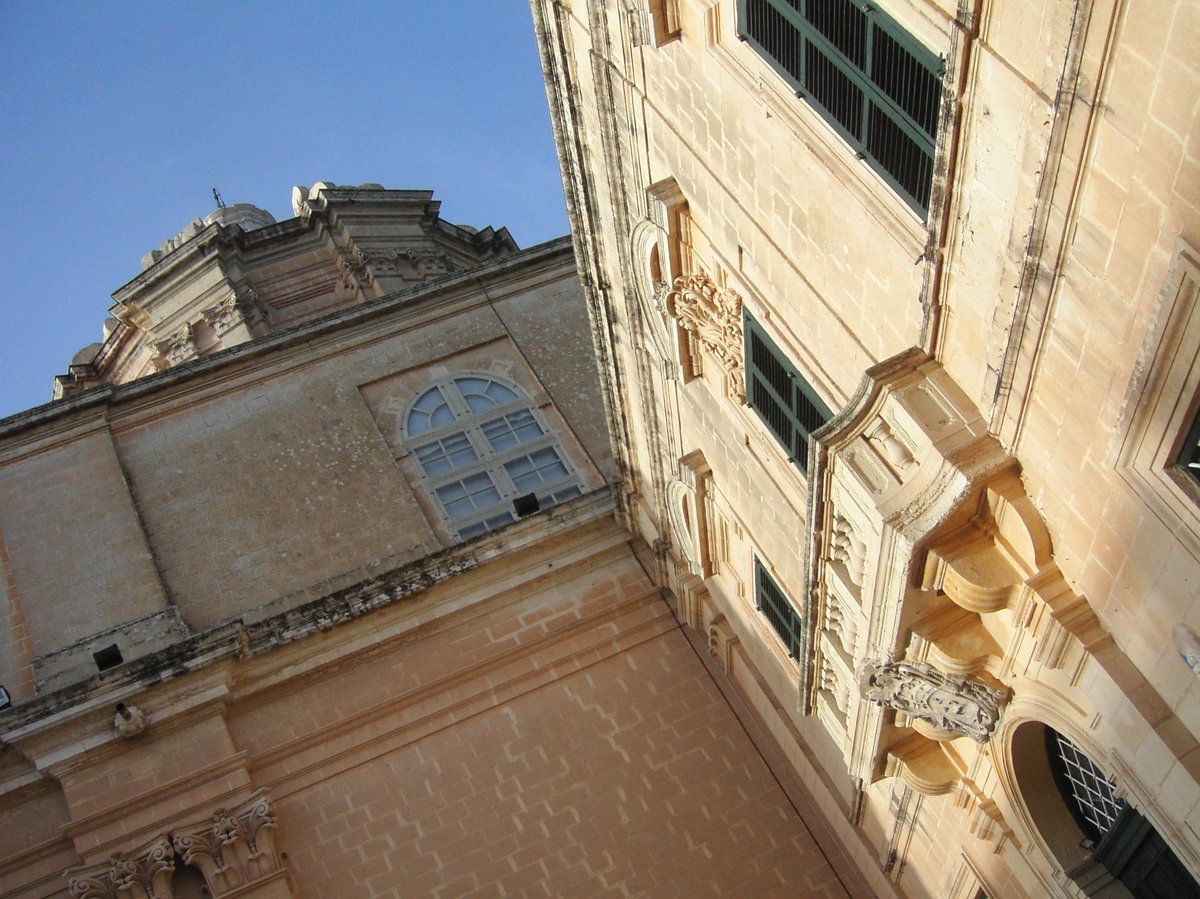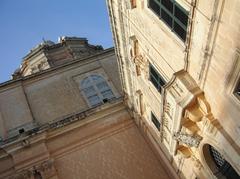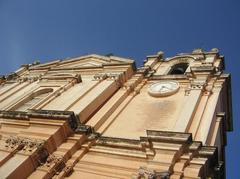
St. Paul’s Cathedral Mdina Malta: Visiting Hours, Tickets & Complete Visitor Guide
Date: 14/06/2025
Introduction
St. Paul’s Cathedral in Mdina, Malta, is a masterpiece of Baroque architecture and a symbol of the island’s rich Christian heritage. Situated within the fortified medieval city of Mdina—known as the “Silent City”—the cathedral is both a spiritual center and a testament to Malta’s enduring history. This guide provides detailed information on St. Paul’s Cathedral’s history, architectural highlights, visitor information, and practical tips to help you make the most of your visit (CatholicShare; Church Trails Malta; Spotting History; GuideMeMalta).
Table of Contents
- Historical Background
- Architectural and Artistic Highlights
- Practical Visitor Information
- Nearby Attractions
- Frequently Asked Questions (FAQ)
- Tips for an Enjoyable Visit
- Summary & Recommendations
- References & Further Information
Historical Background
Foundations and Early Significance
According to Maltese tradition, St. Paul’s Cathedral stands on the site where the Roman governor Publius met Apostle Paul after his shipwreck in AD 60—a pivotal moment that marked the beginning of Christianity in Malta (Church Trails Malta). The earliest church here was dedicated to the Assumption of the Virgin Mary.
Medieval Cathedral and Baroque Reconstruction
The medieval cathedral underwent numerous changes until the 17th century, when architect Lorenzo Gafà added a new choir. A devastating earthquake in 1693 destroyed much of the building, but Gafà’s choir survived and was incorporated into the new Baroque cathedral, completed by 1705 (Church Trails Malta). The cathedral’s reconstruction reflected contemporary Baroque trends while preserving elements of its earlier heritage.
Role in Maltese Identity
St. Paul’s Cathedral has long been a focal point of Malta’s religious life. As the metropolitan cathedral, it played a central role in shaping Maltese Christian identity, especially before the construction of St. John’s Co-Cathedral in Valletta (Wikipedia). Its resilience through earthquakes, occupations, and wars symbolizes the enduring faith and unity of the Maltese people.
Architectural and Artistic Highlights
Façade and Dome
The cathedral’s imposing Baroque façade is flanked by twin bell towers and crowned by an octagonal dome, a hallmark of Gafà’s design (GuideMeMalta). The main portal features bronze statues of St. Peter and St. Paul, and the façade is adorned with the coats-of-arms of Bishop Cocco Palmieri and Grand Master Ramon Perellos.
Interior Layout
The Latin cross plan incorporates a vaulted nave, side aisles, and side chapels. Visitors are greeted by harmonious proportions, with pilasters supporting the ribbed vault and a dome that bathes the nave in natural light (Spotting History).
Artistic Masterpieces
- Frescoes and Paintings: Highlights include Mattia Preti’s “Conversion of St. Paul” and the apse mural “Shipwreck of St. Paul.” The ceiling features biblical scenes by Sicilian artists Antonio and Vincenzo Manno (GuideMeMalta).
- Marble-Inlaid Floor: Over 160 tombstones commemorate bishops and monsignors, with vibrant colors and symbolic motifs (GuideMeMalta).
- Historic Relics: The cathedral and its museum preserve medieval columns, capitals, and treasures such as the Norman-era baptismal font and Irish bog wood portal.
Stained Glass and Decorative Art
Stained glass windows illuminate the interior, symbolizing the divine presence and enhancing the spiritual atmosphere (GuideMeMalta).
Practical Visitor Information
Location & Getting There
Located at the heart of Mdina, the cathedral is easily accessible via the main Mdina Gate. Public buses from Valletta, Sliema, and St. Julian’s all stop at “Mdina,” a short walk from the cathedral (touristplaces.guide). Parking is available outside the city walls.
Visiting Hours
- Monday–Saturday: 9:30 AM – 5:00 PM
- Sunday: 3:00 PM – 5:00 PM
- Note: Hours may change on holidays or during special events. Check the official website before your visit.
Tickets & Admission
- Adults: ~€10
- Discounts: Available for students, seniors, and children
- Includes: Cathedral and Cathedral Museum access
- Purchase: Online or at the entrance (PowerTraveller)
Accessibility
- Ramps at the entrance and assistance for visitors with limited mobility
- Some chapels and museum areas have uneven surfaces
- Contact the cathedral in advance for specific needs (culture-malta.org)
Dress Code & Etiquette
- Modest dress required (shoulders and knees covered)
- Silence and respect during services
- Photography permitted without flash or tripods, except during services or in restricted areas
Guided Tours & Audio Guides
- Guided tours (45–60 minutes) in multiple languages
- Audio guides for self-guided visits
- Book in advance or at the ticket desk (veronikasadventure.com)
Facilities
- Restrooms available
- Gift shop with religious souvenirs and local crafts
- Cafés and restaurants nearby for refreshments
Nearby Attractions
- Palazzo Falson: Historic house museum with medieval and Renaissance artifacts
- Mdina Dungeons: Immersive historical experience
- City Bastions: Panoramic views of Malta’s countryside
- St. Paul’s Grotto (Rabat): Traditional refuge of the apostle, a short walk away
Frequently Asked Questions (FAQ)
Q: What are the visiting hours?
A: Monday–Saturday 9:30 AM–5:00 PM; Sunday 3:00 PM–5:00 PM. Confirm on holidays.
Q: How much are tickets?
A: About €10 for adults, with discounts for certain groups.
Q: Is the cathedral wheelchair accessible?
A: Yes, with ramps and some assistance available.
Q: Can I take photographs?
A: Yes, but no flash or tripods, and not during services.
Q: Are guided tours available?
A: Yes, in multiple languages. Audio guides are also offered.
Q: What should I wear?
A: Modest attire—shoulders and knees covered.
Tips for an Enjoyable Visit
- Visit early mornings or late afternoons to avoid crowds
- Allow 1–2 hours for the cathedral and museum
- Combine your visit with Mdina’s other attractions for a fuller experience
- Book tickets and tours in advance during peak seasons
- Download the Audiala app for guided audio tours and updated information
Summary & Recommendations
St. Paul’s Cathedral in Mdina is an essential stop for anyone interested in Malta’s spiritual, artistic, and historical heritage. Its Baroque architecture, artistic treasures, and well-organized visitor facilities make it accessible and rewarding for all. The cathedral’s resilience and central role in Maltese identity are reflected in every stone, fresco, and ceremony. Enhance your visit with digital resources, guided tours, and by exploring nearby sites in the enchanting city of Mdina (GuideMeMalta; MaltaCulture).
For the latest visitor tips, event updates, and downloadable guided tours, visit the official cathedral website and consider using the Audiala app.
References & Further Information
- Church Trails Malta
- Spotting History
- GuideMeMalta
- CatholicShare
- Culture Malta
- Wikipedia
- Medium
- PowerTraveller
- MaltaCulture
- TouristPlaces.guide
- VeronikasAdventure.com

